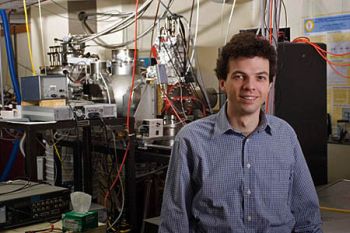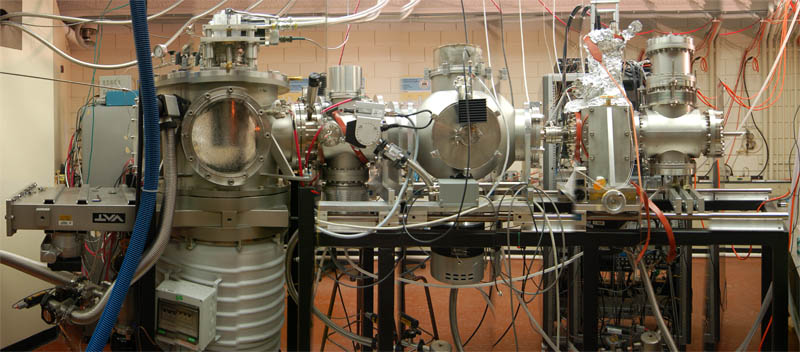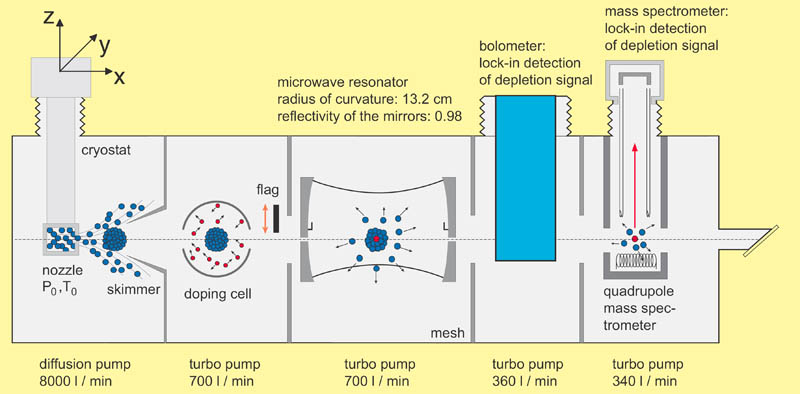![]()
![]()
![]()
|
Helium droplets that consist of several thousand helium atoms (4He) are formed
in a supersonic expansion.
These droplets have a temperature of 0.4 K and are superfluid. They can be doped with one or several
atoms or molecules and characterized spectroscopically. Our instrument has been designed for microwave and
infrared depletion spectroscopy. The resultant rotational or ro-vibrational spectra contain information about
the dopant molecule and about its interaction with the ultra-cold superfluid helium droplet environment. |
 Rudi built the helium droplet instrument.
Rudi built the helium droplet instrument.
|

The helium droplet spectrometer.

Schematic diagram of our helium droplet spectrometer.
To facilitate measurements in the microwave region, we have implemented a microwave resonator into
the instrument. The doped helium droplets eneter and exit the resonator through holes near the centre of the mirrors.
For infrared measurements, the bolometer detector can be raised. This allows coaxial counter-propagation of the laser
beam with the helium droplet beam and detection with the mass spectrometer.
 |
The figure shows infrared depletion spectra of C16O2 (upper trace) and
C16O18O (lower trace) in helium nanodroplets with about 2600 atoms [Chem. Phys. Lett. 424,
146-150 (2006)].
|
![]()
![]()